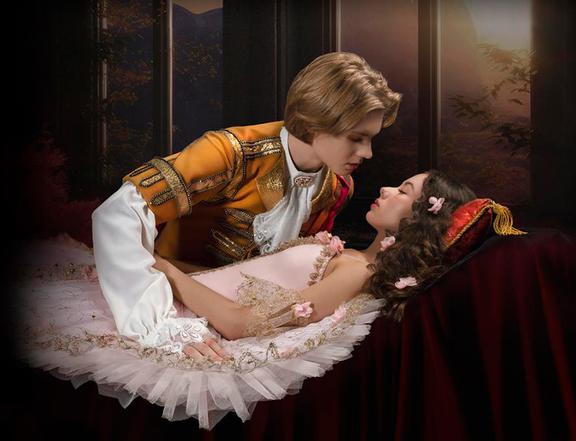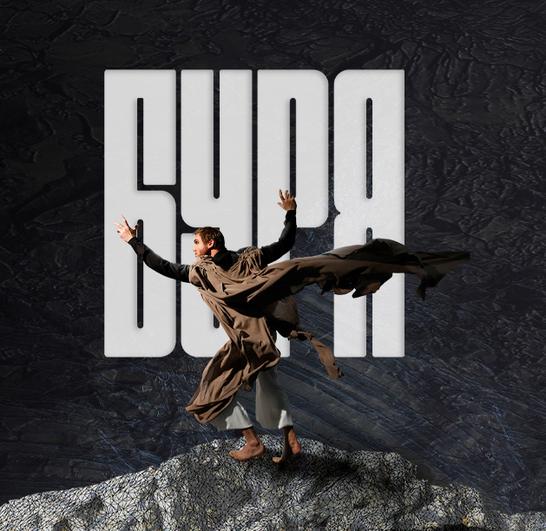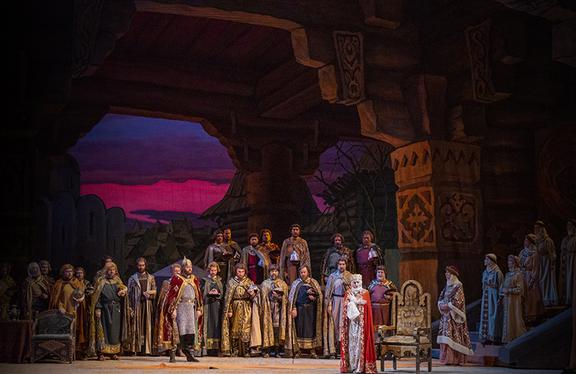
After a four-year break, The Sleeping Beauty will once again grace the stage of the Bolshoi. This return, which will mark the opening of the new theatre season, promises to become one of its most grandiose events. The premiere will take place on the Historic Stage on the 7th of September. It will be broadcast to the Bolshoi’s home address — Theatre Square, as well as Khokhlovskaya, Trubnaya, Bolotnaya Squares and the capital’s Pushkin public garden, at the Moscow cinema Oktyabr, and in more than a hundred cinemas across the country and on the theatre’s official account on the VKontakte social network.
Being one of the best preserved and perfect ballets by Tchaikovsky and Petipa, one of the imperishable symbols of Russian classical ballet, The Sleeping Beauty, of course, could not help but become the common heritage and point of intersection of the Bolshoi and Mariinsky theatres. The Moscow premiere took place nine years after St Petersburg, in 1899. Alexander Gorsky, the future great reformer of the classics and head of the Moscow ballet troupe, who determined the course of its development for many years, was sent to reproduce Petipa’s production. It was The Sleeping Beauty that introduced Gorsky to the Bolshoi Theatre troupe, and it was this performance that he didn’t subject to any revision.
Having crossed the turn of the century, The Sleeping Beauty did not leave the stages of leading Russian theatres in the 20th century. The absolute majority of people involved in the art of ballet understood that the magnificent music and fantastic richness of the choreography (Petipa’s production was firmly entrenched as an “encyclopedia of classical dance”) should not be consigned to oblivion. However, the socio-political cataclysms that Russia experienced in the first quarter of the century could not but affect its fate. A wonderful example of a ballet extravaganza, a ballet fairy tale, depicting not only and not so much the luxury of French court life, as the world order that had developed over centuries, the stages of human existence, the connection between humans and nature and the inevitable struggle between the forces of evil and good, was endlessly adjusted in the spirit of the times and to please the current trends in the development of the art of ballet.
The king and the royal court were depicted in a grotesque form, the Lilac Fairy was dressed in peasant clothes, the violin intermission and the dance of the Nereids were left “overboard”, and so on and so far. Prince Desire, who had previously been accustomed to relying more on his charms and Lilac Fairy’s help than on his own valour, matured and acquired virtuoso variations both in St Petersburg and in Moscow. The part of the Fairy Carabosse was passed from a man to a woman and back, sometimes losing their sharp features and being endowed with dance en point, sometimes regaining their threatening and sweeping gait. (It is not without reason that this character part, which has long returned to its original owners — men, is loved by leading dancers and principals. It is so tempting for them to immerse themselves in its playful element).
The era of dram-balet made the plot focus on everyday life. The era that rejected dram-balet danced everything and everyone out. Yuri Grigorovich, whose version of The Sleeping Beauty will triumphantly hit the stage and screen on the 7th of September, first took to this ballet more than half a century ago, in 1963. That was the most danceable of all its versions. Dancing en point ruled the ball. The set design, created by the choreographer’s regular co-author and friend Simon Virsaladze, was distinguished by minimalism in the spirit of the 1960s.
Virsaladze is another figure in the history of The Sleeping Beauty, who is shared by the Bolshoi and Mariinsky theatres. He is the intersection of the theatrical destinies of this Beauty, which took place in the 20th century. In 1952, Simon Virsaladze designed the version carried out at the Mariinsky Theatre (then the Kirov Theatre) by Konstantin Sergeyev. In 1963 — the first version by Yuri Grigorovich at the Bolshoi. And in 1973 — his second version. The 1973 production was radically different from the one that had seen the stage light ten years earlier. In its essence, it was perceived as a return to Marius Petipa, to its origins. Genre scenes, old pantomimes and the solemn splendour of the palace and park decoration returned to the ballet. “Having devoted attention and care to the original, Grigorovich and Virsaladze expressed themselves in a much more modern way than during their polemic with it. Both the choreographer and the artist have impeccably established that high standard of taste with which the age of the famous Sun King and the era of Petipa should merge in The Sleeping Beauty”, wrote Vera Krasovskaya, the outstanding ballet historian, in her response to the premiere.
An attentive attitude to the original did not at all exclude a creative approach to its rethinking. Not only was the part of the Fairy Carabosse returned to male performers, but also received a more “detailed” dance development (Petipa had solved it by the means of pantomime). The confrontation between the fairies of evil and good — Carabosse and the Lilac Fairy — became more contrasting and significant. The image of Prince Desire deepened but did not become less “danceable”. A wonderful pas de deux of Cinderella and the Prince in the scene of the entrance of other fairy tale characters and a number of other scenes were added. In contrast to the prevailing white colour of the 1963 production, this version’s set and costumes sparkled with different colours and shades. The “picturesque symbolism”, for which Virsaladze’s art was so famous, came into effect. The stage design set clear boundaries between the real, everyday, and festive and magical elements. The party was marching along the grand staircase and the wide-open palace gates relealed its view. In front of them, without coming into contact with the wonderful world of the palace and park, everyday life episodes unfolded, and the Fairy Carabosse raged.
Yuri Grigorovich has staged The Sleeping Beauty many times in other theatres in Russia and abroad. At the Bolshoi — once again in 2011. That performance was the first ballet staged on the Historic Stage of the Bolshoi, opened after its reconstruction.
The current production represents the work of the Grigorovich-Virsaladze tandem. Maestro Valery Gergiev will be at the conductor’s stand for the first performance.
The two September series of shows feature both the troupe’s leading soloists, who have repeatedly performed in the ballet The Sleeping Beauty and are gladly returning to their favourite parts, and young artists who have yet to demonstrate their skill and charisma in this performance. The premiere shows take place on the 7th and 8th of September (12:00 and 19:00), the 21st of September (12:00 and 19:00) and the 22nd of September (12:00) — are rich in debut performances as never before.
The last premiere of the season will take place on the 11th of July on the Chamber Stage of the theatre and will feature a new stage version of Ruggero Leoncavallo’s opera Pagliacci.
* In Italian Vesti la giubba! (literally Put on a costume — words from the famous aria of Canio).

